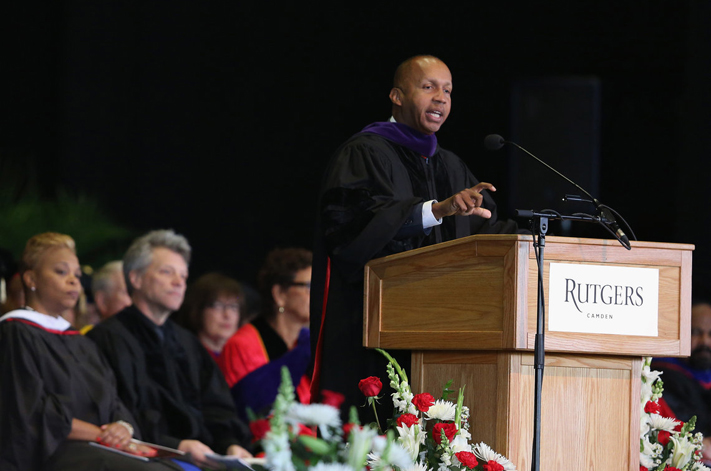Project Description

Yvette V. Lapayese, Ph.D., Loyola Marymount University
Ursula S. Aldana, Ph.D.,Loyola Marymount University
Eduardo Lara, Ph.D. Candidate, UCLA Graduate School of Education and Information Studies | Originally Published at Penn GSE Perspectives on Urban Education. | Volume 11 Issue 1 Winter 2014
Download the Report
Introduction
To address the miseducation of students of color, the U.S. Department of Education began developing and implementing alternative teacher training modules, and reframing teacher certification programs. First established in the 1980s as a response to projected teacher shortages, alternative certification programs are now found in almost every state, and in many colleges and universities (Feistritzer, 2005). In some parts of the country, almost as many teachers enter the profession through alternative programs as those who enter through traditional programs (Humphrey & Wechsler, 2007).
One of the most prominent alternative teacher training programs designed to address the achievement gap of students of color is Teach for America (TFA). Teach for America selects well-educated young people from many of the nation’s most prestigious universities. This selection process often neglects minorities, as elite universities’ attendance is majority White.
Despite the controversy surrounding programs like TFA—taking mostly upper-class White students from elite universities and placing them in our neediest schools—there is a small, albeit significant, percentage of minority students who participate in this alternative teacher preparation program (http://www.teachforamerica.org/why-teach-for-america/the-corps/who-we-lo…). Their experiences warrant careful examination.
We argue that to deeply understand the alternative education programs that serve primarily poor students of color, we must examine the insights and experiences of teacher-training participants of color. We research TFA from the perspectives of teachers of color, using an interest-convergence framework. Two research questions guide the study: (1) How does TFA address issues of race and racism in the recruitment and support of its teacher corp and (2) How do TFA educators of color perceive the impact of alternative teaching programs in economically disenfranchised communities of color. We conclude that TFA effectively benefits the racial and economic interests of Whites.
Research design and participants
We grounded the study of TFA and their participants with Critical Race Methodology, a qualitative approach that highlights the epistemologies of People of Color. Critical Race Methodology utilizes counterstorytelling to document how racial/discriminatory experiences shape historically marginalized groups, introducing their stories to raise critical consciousness about racial injustice (Solorzano & Yosso, 2001;).
1. Build community – They remind the marginalized that we do not navigate through the educational system alone. Counterstorytelling cultivates empathy.
2. Challenge the standard beliefs of those at society’s center – Authentic stories from oppressed groups question the master narrative and transform normalized belief systems.
3. Nurture cultural wealth, memory and resistance – These stories can challenge and dismantle racism and restore the legacies of resistance and empowerment movements.
4. Transform education – “Because counterstories embed critical conceptual and theoretical content within an accessible story format, they can serve as pedagogical tools” (Yosso, 2006, p. 15). These stories should also prompt/motivate oppressed groups to take action.
We selected teacher participants using purposive sampling at a mid-sized university that houses a significant percentage of TFA recruits. The request for participants was distributed through their teacher training courses. The fifteen teachers selected for the study were part of a Master’s educational program with an emphasis on social justice. Each teacher has been in the classroom for at least two years, has been a long-standing advocate for racial equity, and is knowledgeable in issues surrounding race and power. Eight of the teachers hold degrees related to race and ethnic studies. A total of five teachers identify as African-American and ten identify as Latino.
We used in-depth interviews to capture the counterstories of the participants. These interviews consisted of three parts: (1) knowledge and beliefs about race, power and education, (2) information on the participant and her/his experiences in the program, and (3) perception of the program’s impact in economically disenfranchised communities of color.
We conducted one in-depth interview with each TFA teacher of color. Each interview lasted approximately 1-2 hours, with follow-up emails. The researchers also conducted two focus group interviews. The first focus group interview consisted of five TFA teachers of color. The second focus group interview consisted of four TFA teachers of color. The focus group interviews lasted 2-2.5 hours each, and were grounded in open-ended questions that emerged from the individual interviews.
We collected and analyzed data according to the highest standards of qualitative research, using the common qualitative tools and technologies of triangulation, member checks, thick descriptions, and audit trails (Lincoln & Guba, 1985). We used two types of triangulation – investigator and theory triangulation (Denzin, 1978). Theory triangulation relies on the use of multiple perspectives to interpret data. In this study, we triangulated the data by relying on race theories in the field of education. As we collected the data, we used our positions and intuitions as teachers of color to provide insight in analyzing the data, and conferred continuously on emerging themes.
Maintaining the data’s integrity, we conducted regular member checks by selecting member participants to review their working themes. We incorporated their feedback into the final narrative (Janesick, 2000). Moreover, by directly quoting study participants’ accounts of their experiences, we kept the analysis consistent with the data by using thick description. We kept an audit trail by recording all stages of the data collection and analysis, to ensure accuracy.
In building relationships with the teachers, the researchers related to their own experiences as teachers and educators of teachers; developing these relationships over the course of two years allowed them to add detail and depth to the data. We should note that two of the researchers are former TFA teachers of color and one of the researchers is a faculty member who formally taught TFA students.
Interest-convergence theory in the field of education
Rule 1. The interests of Blacks in achieving racial equality will be accommodated only when that interest converges with the interest of White policy-makers. This convergence relieves Whites most importantly before it relieves the degree of harm suffered by Blacks.
Rule 2. Even when interest-convergence results in an effective racial remedy, that remedy will be abrogated at the point that policymakers fear the remedial policy is threatening the superior societal status of Whites, particularly those in the middle and upper classes (p. 69).
Legal scholars and educational researchers highlight how legal rulings aimed at disrupting inequity fundamentally favor the interests of those in power. Lopez (2004), for example, used interest-convergence to interpret the ruling of Plyler v. Doe, which held that withholding money from schools that service undocumented children violates the Equal Protection Clause of the Fourteenth Amendment. Similar to the Brown case, the Plyler case appears to be a solid victory. Lopez cautions us by pointing to evidence that while granting Latino civil rights, the ruling actually reinforces the positions of the pre-existing racial hierarchy–Whites on the top and Latinos at the bottom. Lopez explains that Plyler is an interest convergence ruling “because the nation’s interest in maintaining a cheap and expendable labor force has converged with the expectation of an education for undocumented children” (Lopez, 2005, p. 82).
The principle of interest convergence also reveals how school policies and practices aimed at improving education for children of color end up converging with the interests of Whites. Building on Bell’s work, Ladson-Billings (1999) illuminated how our school system implements desegregation, using interest-conversion. She argues that in order to get White parents to keep their children in a desegregating school, school officials often offer special programs and other perks (Ladson-Billings, 1999). Magnet programs, AP classes, and even special language programs become lucrative selling tokens for schools interested in drawing or maintaining a White and wealthy population. By design, desegregation offers students of color access to well-resourced schools; however, in practice, desegregation ultimately privileges Whites.
Similarly, Donnor (2005) applies interest-convergence to the education of African-American male collegiate football players. Based on a CRT framework, Donnor (2005) maintains that for African American males who possess the physical potential or talent to participate at the level of Division IA football, education no longer serves their interests, but rather the interests of those who make profit from their physical, rather than academic, success. Donnor cites evidence from the National Collegiate Athletics Association (NCAA) suggesting that even though African-Americans make up the majority of the student athletes in college football (Division IA), less than half graduated from college between 1996 and 2002. Clearly, the White reliance on African American male athletes to financially support universities exemplifies the same interest convergence notion Bell posited twenty years earlier, while failing to focus on their academic development in these primarily White elite universities.
Interest-convergence suggests cultural change only takes place when the interests of the dominant and oppressed groups converge. This means educational researchers must interrogate the policies and practices of organizations aimed at disrupting educational inequity.
The counterstories of TFA teachers of color
In addressing the first research question—how does TFA address issues of race and racism in the recruitment and support of its teacher corp—TFA teachers of color argue that TFA effectively develops racial know-how for Whites. In regard to the second research question—how do TFA educators of color perceive the impact of alternative teaching programs in economically disenfranchised communities of color—TFA teachers of color contend that TFA has a lopsided impact. TFA effectively benefits the economic interests of Whites, but TFA has mixed impact, at best, altering the education of poor youth of color. In the following sections, the researchers discuss these two themes in greater detail.
Racial know-how for White teachers
To address this deep racial chasm, TFA exposes teachers to multicultural education pieces. TFA hosts a summer institute for teachers, prior to classroom teaching. The Summer Institute presents one of the first opportunities to discuss race and racism. Interviews with TFA teachers of color reveal that TFA’s five-week Summer Institute develops a superficial racial know-how for Whites. This results in static, one-dimensional conversations about race and racism that offer little insight for corps members of color.
Overall, TFA teachers of color pointed to the fact that TFA’s selected readings were appropriate–well-known scholars like hooks, Ladson-Billings, and Noguera were among required readings. Unfortunately, the teachers revealed that they discussed the readings superficially at best. One teacher stated:
It was Race 101. For me, I am able to go beyond those discussions, so I just sat there and listened to White teachers struggle and resist some of the points in the readings. I really didn’t get anything out of it.
Another TFA Latina student added:
I have an extensive background in race and ethnic studies. Most of the conversations didn’t make me think more deeply about race. These conversations were not designed for me, they were designed for the White teachers who maybe never had a class on race. It was pretty disturbing for me to see the lack of expertise around these issues from an organization that works with students of color.
Furthermore, the teachers explained that institute directors encouraged discussing race and racism through elementary activities, such as “4 corners,” “walk the line,” and other diversity exercises to encourage the corps members to see the differences between themselves and the privilege they may have over other corps members of color. Given that corps members are expected to participate in every activity (or risk getting written up), it became the implicit responsibility of the teachers of color to answer questions pertaining to difference.
As evidenced by the TFA teachers of color, TFA set up summer institute discussions surrounding race and racism primarily to benefit the White teachers. In follow-up email exchanges with the teachers, several alluded to the feeling that the White teachers were more concerned with avoiding the potential of being perceived as racist than truly undergoing a process of deep racial consciousness. As one teacher noted:
During a lunch break, one White teacher sat down next to me and requested I tell her everything about my experiences with racism. It’s like she wanted the cliff notes of what a person of color goes through.
Another teacher elaborated:
Not once did we talk about White privilege. We never talked about the White race. It was always about the other races. Like, so how can you work with Black kids? How can you connect with Black boys? Anytime the conversation got too uncomfortable or tense, it was quickly shut down. I wanted those talks, but everything was catered to White teachers feeling comfortable, everything being positive and constructive.
Thus, the institute allowed White corp members to passively learn about race without having to self-reflect, or concede privilege. Discussing other races without discussing the White race dangerously reifies Whiteness as invisible.” (Howard, 2006; Leonardo, 2002; Mazzei, 1997). This is highly problematic in an organization aiming to remedy the achievement gap and work with students of color. Non-Whites are “raced” because they are not considered the norm. Whiteness then remains invisible, mentally and physically, so it does not have to yield to the reality of group-based advantage.
One teacher stated:
TFA may agree in the abstract children of color deserve an equal education, but I have never heard TFA articulate how in order to really achieve that you need to alter the status of Whites. They still kind of operate from the assumption that communities of color want White teachers in there. Not sure they’ve ever asked the kids, hey what kind of teacher do you want. And I guess there is the second assumption that White people don’t need help. From what I witnessed in the Institute, yeah they do.
So we talk about how to teach Black kids and Latino kids but we don’t talk about what it means to be White. Why is that? Why don’t we ever talk about what it means to be White?
All the teachers of color concurred Whites were not seen as a power-holding racialized group. Whiteness remained diaphanous, the default category. As a result, the achievement gap becomes the primary platform for racial discussion versus White privilege.
In addition, the TFA teachers of color identified the organization’s internal segregation. One teacher explained:
You could visibly see that the Black and Latino teachers sat together and that the White teachers sat together. There was no integration and no effort to really address that kind of internal segregation. You know that book why do all the Black kids sit together in the cafeteria. That was TFA Summer Institute.
It is important to note that in the first focus group discussions, three TFA male teachers of color brought up distinct experiences. These young men articulated several ways they were silenced during the Summer Institute and in follow-up professional development workshops. One teacher stated, “If you’re an outspoken Black man in this organization, good luck. You’re immediately labeled and watched. They keep an eye on you.”
TFA ultimately uses the Summer Institute and follow-up workshops to train White teachers on how to effectively teach low-income students, constantly emphasizing the color of the children and communities they will serve. The researchers note that TFA superficially addresses race and racism in ways that do not benefit TFA teachers of color, and that the organization engages in minimal (if any) exploration on its own racial superiority or privilege.
Lopsided impact benefiting the economic interests of Whites
Although TFA exposes their success stories, data on TFA’s impact is mixed. Laczko-Kerr (2002) found that TFA teachers performed similarly to other under-certified teachers, yet did not perform as well as their traditionally-certified counterparts. Raymond, Fletcher, and Luque (2001) found that TFA teachers in Houston produced more positive learning gains, with greater regularity in the classroom, than all other teachers in the district regardless of experience. However, critics condemned this study on methodological grounds (Laczko-Kerr, 2002; National Commission on Teaching and America’s Future, 2001).
Furthermore, Darling-Hammond, Holtzman, Gatlin, and Heilig (2005) reanalyzed the Houston data and reached the opposite conclusion. They found that certified teachers consistently produced significantly stronger student achievement gains than uncertified teachers. In addition, they found that alternatively certified teachers, including TFA teachers, less effectively raised student achievement. Not surprisingly, the study received sharp criticism from TFA proponents.
Another recent study on alternative certification programs and student achievement employed an experimental design, comparing achievement scores from students randomly assigned to either a TFA teacher, another novice, or veteran teacher in the same elementary school (Decker, Mayer, & Glazerman, 2004). This study found that students of TFA teachers outscored the control group of non-TFA teachers by three percentile points on the Iowa Test of Basic Skills mathematics portion. In addition, students of TFA teachers scored about the same as the control group on the reading portion of the exam. Critics of the study raised concerns about the comparison group and pointed to the low achievement levels of both groups of students, arguing that the study’s conclusions should have called into question TFA’s effectiveness as a low student-achievement remedy (Darling-Hammond et al., 2005; Viadero, 2004). Nonetheless, the study is one of very few that tracked student achievement among the program’s graduates.
TFA teachers of color concur that the evidence on TFA’s effectiveness is mixed. One teacher of color avowed:
I am not quite convinced TFA as an organization is really and truly making a difference in these schools. So you go up a few points in testing, so what? Does that really mean that great teaching and learning is going on? Is that your only assessment? Just not convinced.
Another teacher claimed:
White teachers are struggling. So many are dropping out after 6 months, after 1 year. But no one really talks about that reality. They are constantly bitching about TFA, and how abandoned they feel once they are in the classroom.
One Latina teacher claimed:
I am teaching in the area I grew up in. I want to be a teacher, and TFA was my in. I have no evidence to think that TFA’s presence has made a significant impact in this community. Test scores are a limited foundation for analysis. What I worry the most about is the two-year commitment. It is hurtful to the community, and I do not understand how a constant teacher turn-over reverses educational inequity. It’s bizarre thinking. Actually, it’s dishonest.
TFA teachers of color revealed that TFA effectively benefits the economic privilege of Whites. One TFA teacher was particularly affected by a comment that she heard from one of her White colleagues:
I remember him coming up to me after a really hard day and telling me he did not know if this was all worth it. I asked him what he meant by that and he said that he was doing this for his resume; that it was just like saying you were involved in the Peace Corp. That comment made me very angry. In my opinion he was using the kids to get a better job.
Another teacher expounded:
I hear White teachers talk about this experience as being a step in the right direction. What I mean by that is they know this experience is marketable. They can sell it to their future employers. See look at me, I worked with poor kids. No one talks about this, but it is there. I have heard it several, several times.
During one focus group discussion, one researcher used the story above to see what the other TFA teachers would say. No one was surprised:
You are going to have White teachers who are joining this program for their own benefit. They may care about the kids, but they also care about their personal career and how working with poor kids is going to make them come across as a caring White person. The real problem is that TFA encourages this. These are the messages we always get. How to use the TFA experience to further your long-term career plans.
Veltri (2010) conducted a study of TFA corp members, where she cites that graduates apply for TFA to benefit financially. Veltri (2010) explains:
The organization’s web site advertises a full first-year teacher’s salary and health benefits as well as what appeared to be viewed as a TFA signing bonus, (that does not require payback), in the form of the AmeriCorp stipend. For most applicants, the package was viewed as a tangible incentive that did not involve extra preparation. As an opportunity to earn money for the repayment of college loans or graduate school tuition was cited by 80% of study participants as a major reason for their applying to Teach For America (p. 23).
Since its origins, TFA has exponentially increased its many perks to its corps members such as access to financial benefits and social networks. TFA corps members and alumni access discounts for LSAT and MCAT prep courses, along with waived application fees for graduate degree programs–ultimately recognizing that corps members do leave classroom teaching upon completing TFA’s two-year program.
Interest-convergence analysis of TFA
Acts that help students of color also implicate White interests, as these acts connect White racial and economic interests with the oppressed people of color. Bell asserts that under these circumstances, organizations cannot directly help disenfranchised people. These acts will only help secondarily (in this case, alternative teacher training) and, even then, they do not primarily focus on the beneficiaries. Directly helping disenfranchised groups would expose a long-held institutional, psychological, financial, and White personal privilege that has accrued over time. Some will see a direct move as admitting White responsibility for oppressing minorities. This paradoxal pattern categorizes Whiteness as an individualized, merit-based hierarchy, further disassociating Whiteness from real change.
On their website, TFA makes the following claims:
Teach for America is building a movement to eliminate educational inequity by enlisting our nation’s most promising future leaders in the effort. We recruit outstanding recent college graduates and professionals from all backgrounds to teach for two years in low-income communities. Corps members receive robust training and support to help them lead their students to success and receive a competitive salary, health insurance, and retirement benefits through their schools for their critical work. After two years, they join a growing force of alumni in education, policy, law, medicine, and other sectors who are leading some of the most successful efforts to ensure that all children have the opportunity to receive an excellent education.
You will become part of a growing movement of people from all backgrounds working to improve the education and life prospects of children in low-income communities. As a corps member, you will further develop the leadership, management and critical thinking skills essential for success in any field. As you take the next steps in your career, you will have access to more than 200 graduate school and employer partnerships, plus a network of nearly 30,000 leaders working within and beyond education.
Looking ahead – Organizational Policy Recommendations
L[/fusion_dropcap]ooking ahead to further research on White educational organizations, it is imperative to keep the following in mind:
• Interest-convergence is alive and well, and applicable when we understand and assess educational phenomena. • Educational solutions that seemingly benefit students of color primarily benefit Whites. • We must identify the economic and political advances for Whites, ultimately making “Whiteness” visible.
It is the researchers’ intent that TFA will use the findings presented in this article to inspire some much needed dialogue and change regarding TFA’s racial practices as an organization upholding White interests. The participant’s data inform several recommendations TFA can implement to move from an organization that simply reifies institutional racism—and basic racial know-how for their White corps members—to an organization that not only embraces racial consciousness pedagogies but converts them into practice.
It is important to note that the researchers hesitate to write this section due to three primary reasons: 1) According to narratives shared by the research participants, recommendations specific to the interests of corps members of color routinely fall on deaf ears, 2) Concern that TFA could misuse these recommendations to further mask the corps’ racial nature, as opposed to advancing a more critical approach toward how they handle racial discourse, and 3) TFA’s public relations machine, while protecting their image, attempt to silence any real critique about their organization, especially on the subject of race.
Given the context shared above, the researchers make the following recommendations intending that TFA listen and allow for institutional change with regards to their status as a racial institution analyzed under an interest convergence framework. The researchers connected the recommendations to the salient themes that emerged from the research participants’ stories and framed them around the TFA process: from prospective applicants through recruitment to alumni.
Recruitment: As referenced numerous times throughout this study, TFA recruits from the nation’s most prestigious universities. This ultimately leaves out many of our country’s more affordable public state universities. African American and Latinos more likely attend state universities; a considerable segment of this population enters the higher education system through community colleges. Though it runs counter to TFA’s current recruitment strategy, TFA can start changing its majority-White corps by recruiting students of color from state universities. Though TFA does not admit community college students, the organization can start building interest amongst students of color attending these institutions by providing some form of recruitment information. At minimum, schools can display TFA literature in key spaces, such as career centers for community colleges. However, we recommend a more active presence to cultivate a pool of prospective students of color by the time they transfer to a four-year institution. An active presence can include TFA information sessions, and recruiters actively engaging students on campus with the organization. A recent study based on a sample of 2,029 individuals concluded that African American and Latino corps members stayed in teaching longer than their Asian and White counterparts (Project on the Next Generation of Teachers at the Harvard Graduate School of Education, 2008).
Application and Interview: The application and interview process requires prospective corps members to consider a variety of teaching scenarios. Applicants are also expected to teach a condensed version of a lesson and engage in a discussion with other prospective corps members on a topic related to teacher education. Though the subject of race may factor into the discussion at times, TFA must explicitly factor racial knowledge into their admission decision. In other words, TFA must critically weigh applicants on their knowledge of race and racism as an admission benchmark.
Summer Institute: TFA consistently champions standardizing corps member training in order to guarantee everyone learns the basic foundations of teacher education. However, as noted by the research participants’ responses, TFA short-changes teachers of color on their education of race and racism because they are familiar with this topic—either due to their social locations as people of color and/or because they critically studied the subject in college. It is time TFA not only teaches corps members how to differentiate instruction for their students, but also differentiate their own instruction to meet the needs of their yearly incoming corps. TFA should require an introductory-level based training on race and racism for corps members who have not taken coursework on this subject during their undergraduate careers, while they require a more advanced curriculum for corps members who demonstrate advanced knowledge of this topic. TFA should embed a meaningful critical study of Whiteness and privilege in order to alleviate the invisibility of this social location.
Ongoing Training and Support: TFA frames their two-year on-going institutional support around the goal to make significant academic gains in the classroom. The admirable goal, however, negates to consider these under-resourced schools’ context and complex set of social ecologies. The effects of institutional racism underscore how and why under-resourced schools exist. TFA needs to build a more critical lens into their on-going support structure, such as Critical Race Theory, as a way to help corps members make sense of school inequality as they experience it first-hand at their school sites and as a tool to reframe curriculum. For example, Yosso’s concept of community cultural wealth, an offshoot of Critical Race Theory, can help corps members understand how to implement a wide array of essential community resources into their everyday pedagogy. Bringing in community elders as guest speakers, engaging parents as advocates, and relying on native languages as assets in the classroom, exemplify a community cultural wealth approach toward teaching that can benefit both corps members and, more importantly, the students they teach.
Alumni: After two-years of successful service, TFA considers teachers alumni of the program and organization. As referenced earlier, TFA considers alumni an important component of their program due to their long-term goal improving the education of low-income children. Referencing education inequality as solely a “low-income” problem simplifies the problem and masks how race and racism also play a role in maintaining unequal schools. Consequently, alumni need on-going support to shape a movement including class and race. For example, TFA routinely hosts conferences, referred to as summits, for its large and constantly growing alumni-base. Such conferences can benefit from adopting a more critical stance toward race by inviting speakers with expertise in this area and fostering safe spaces for alumni to continue discussing this issue.
Finally, TFA promotes a myriad of incentives in the form of scholarships, fellowships, preferred admission status at select graduate programs across the country, and admission deferment while engaging in two-years of service. In addition, TFA should consider creating incentives to stay in the classroom. Though critical of extrinsic incentives, TFA can build extrinsic-based incentives that actually benefit the students they serve into their incentive model. For instance, TFA donors can earmark funds specifically for alumni who stay in the classroom, to help with particular classroom expenses such as classroom libraries. In this way, the teachers and students both benefit. Incentives also send corp members a strong institutional message, reflecting the value in remaining in the classroom as a teacher.
YVETTE V. LAPAYESE, Ph.D. is Associate Professor and Associate Chair in the Department of Urban Education at Loyola Marymount University. Her research focuses on race and feminist methodologies with regard to K-12 schooling. She has published in numerous research journals and international and national conferences. Her most recent book explores the epistemologies of mother-scholars in the field of education. Dr. Lapayese received her Ph.D. in Comparative and International Education at UCLA.
URSULA S. ALDANA, Ph.D. is a Postdoctoral Research Associate for the Civil Rights Project/Proyecto Derechos Civiles at UCLA and adjunct faculty in the School of Education at Loyola Marymount University (LMU). Her research focuses on education reform, particularly with regard to issues of equity in education for low-income Latino and African-American students. She joined the Civil Rights Project in 2008 and has worked on various research projects related to bilingual education at the secondary level, college access and binational research with Mexico. Dr. Aldana received her Ph.D. in Education with a concentration in Urban Schooling from UCLA’s Graduate School of Education and Information Studies and before worked as a middle and high school teacher for seven years.
EDUARDO LARA, Ph.D. Candidate is a doctoral student in the Social Sciences and Comparative Education division at UCLA’s Graduate School of Education and Information Studies. As a specialist in Race and Ethnic Studies, his research interests include the educational experiences of Latino males, the militarization of urban high schools, and the identity development of gay Latinos in schools. Lara’s dissertation examines the educational experiences of Latino military veterans, including issues of college access and masculinity for this growing population of students.
References:
Bell, D. (1980). Brown v. Board of Education and the interest convergence dilemma. Harvard Law Review 93, 518–533.
Darling-Hammond, L., Holtzman, D. J., Gatlin, S. J., & Heilig, J. V. (2005). Does teacher preparation matter? Evidence about teacher certification, teach for America, and teacher effectiveness. Education Policy Analysis Archives 13(42), 1-29.
Decker, P. T., Mayer, D. P., & Glazerman, S. (2004). The effects of Teach For America on students: Findings from a national evaluation. Washington, DC: Mathematica. Retrieved July 28, 2009 from http://www.teachforamerica.org/documents/mathematica_results_6.9.04.pdf.
Donnor, J. K. (2005). Towards an interest-convergence in the education of African-American football student athletes in major college sports. Race Ethnicity and Education 8(1), 45-67.
Feistritzer, E. (2005). Alternative teacher certification: A state-by-state analysis 2005. Washington, DC: National Center for Education Information.
Humphrey, D. C. & Wechsler, M. E. (2007). Insights into alternative certification: Initial findings from a national study. Teachers College Record 109(3), 483-530.
Laczko-Kerr, I., & Berliner, D. (2002). The effectiveness of Teach for America and other under-certified teachers on student academic achievement: A case of harmful public policy. Education Policy Analysis Archives 10(37), 1-53.
Ladson-Billings, G. J. (1998a). Just what is Critical Race Theory and what’s it doing in a nice field like education? International Journal of Qualitative Studies in Education 11, 7–24.
Ladson-Billings, G. J. (1998b). Preparing teachers for diverse student populations: a Critical Race Theory perspective. Review of Research in Education 24, 211–247.
Ladson-Billings, G. J. (2005). The evolving role of Critical Race Theory in educational scholarship. Race, Ethnicity, and Education 8, 115–119.
Lopez, M. (2004). Reflections on educating Latina and Latino undocumented children: Beyond Plyler versus DoE. Seton Hall Law Review, 79-102.
Lynn, M., Yosso, T.J., Solórzano, D. G. & Parker, L. (2002). Critical Race Theory and education: Qualitative research in the new millennium. Qualitative Inquiry 8, 3–6.
Palmer, D. (2010). Race, power, and equity in a multiethnic urban elementary school with a dual-language strand. Anthropology and Education Quarterly 41, 94-111.
Parker, L., Deyhle, D., & Villenas, S. (Eds.). (1999). Race is, race ain’t: Critical Race Theory and qualitative studies in education. Boulder, CO: Westview Press.
Solórzano, D.G., & Yosso, T. J. (2001). Critical race and LatCrit theory and method: Counter-storytelling Chicana and Chicano graduate school experiences. International Journal of Qualitative Studies in Education, 14(4), 371–95.
Solórzano, D. G., & Yosso, T. J. (2002). Critical race methodology: Counterstorytelling as an analytical framework for education research. Qualitative Inquiry 8, 23–44.
Stillwell, R. (2010). Public school graduates and dropouts from the common core of data: School year 2007–08. National Center for Education Statistics: NCES 2010-341.
Veltri, B. (2010). Learning on other people’s kids: Becoming a Teach For America teacher. Information Age Publishers
Wilson, S. M., Floden, R. E., & Ferrini-Mundy, J. (2001). Teacher preparation research: Current knowledge, gaps, and recommendations. Seattle, WA: Center for the Study of Teaching and Policy.
Yosso, T. (2006). Critical race counterstories along the Chicana/Chicano educational pipeline. New York: Routledge













